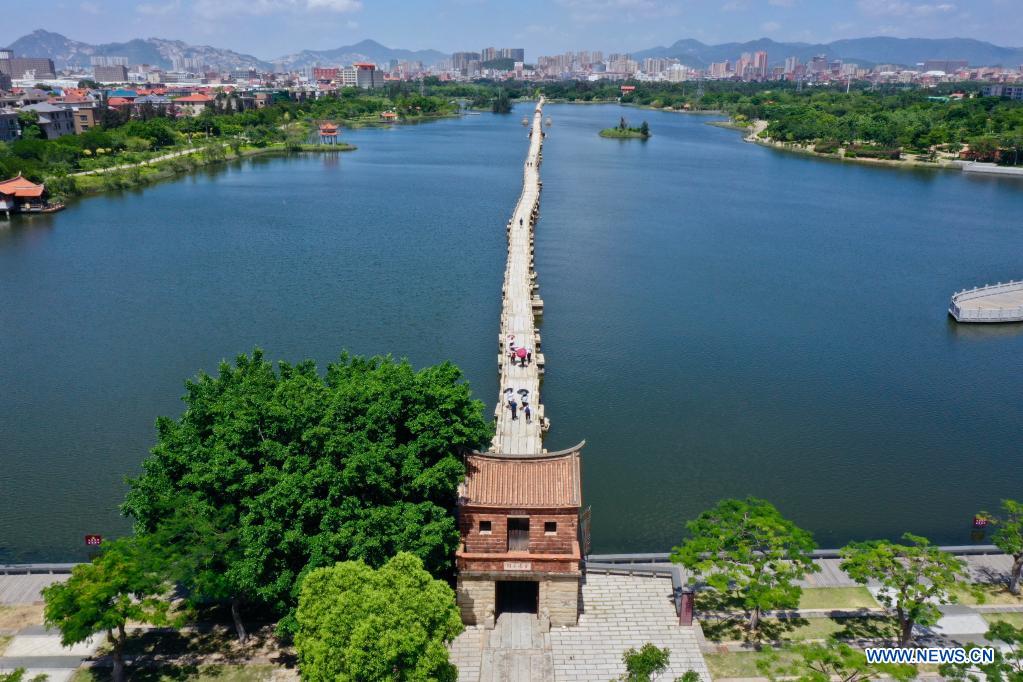Quanzhou added to UNESCO World Heritage List
East China's port city of Quanzhou, once hailed as "the very great and noble city" by the Italian explorer Marco Polo, won UNESCO World Cultural Heritage status Sunday, bringing the total number of the country's UNESCO World Heritage sites to 56.
East China's port city of Quanzhou, once hailed as "the very great and noble city" by the Italian explorer Marco Polo, won UNESCO World Cultural Heritage status Sunday, bringing the total number of the country's UNESCO World Heritage sites to 56.

Aerial photo taken on July 8, 2021 shows Anping Bridge in Anhai Town of Quanzhou, southeast China's Fujian Province. China's "Quanzhou: Emporium of the World in Song-Yuan China" was added to the UNESCO World Heritage List as a cultural site on Sunday, bringing the total number of the country's UNESCO World Heritage sites to 56. Quanzhou, a coastal city in China's Fujian Province, was a global maritime trade center back in the Song and Yuan dynasties. (Xinhua/Jiang Kehong)
UNESCO accepted "Quanzhou: Emporium of the World in Song-Yuan China" as a cultural property on its World Heritage List amid the ongoing 44th session of the World Heritage Committee held in Fuzhou, capital of east China's Fujian Province.
Located on narrow plains along the coastline of Fujian, Quanzhou was one of the world's largest ports along the historic Maritime Silk Road, particularly in ancient China's Song Dynasty (960-1279) and Yuan Dynasty (1271-1368).
The serial property includes 22 sites of administrative buildings and structures, religious buildings, and statues. The property witnessed multi-cultural communities, cultural memorial sites and monuments, the production of ceramics and iron, and a transportation network formed of bridges, docks and pagodas that guided voyagers.
"It reflects greatly the spatial structure that combined production, transportation and marketing. It demonstrates the key institutional, social and cultural factors that contributed to the spectacular rise and prosperity of Quanzhou as a maritime hub of the East and Southeast Asia trade network during the 10th to 14th centuries AD," said a report by the International Council on Monuments and Sites (ICOMOS), the committee's official advisory body.
It is the second time the city has applied for the prestigious title. In 2018, China's nomination "Historic Monuments and Sites of Ancient Quanzhou (Zayton)" was referred back for a second chance when the committee met in Bahrain in 2018.
China made significant technical adjustments and resubmitted the application as "Quanzhou: Emporium of the World in Song-Yuan China," with the former 16 sites included in the serial nomination expanded to 22 sites, according to Zhang Lei. Zhang is head of the world cultural heritage department under China's National Cultural Heritage Administration and made the remarks at a press conference held earlier this month.
The session, originally scheduled for 2020 but postponed due to COVID-19, has been extended until July 31 to go over the agendas of both 2020 and 2021.

